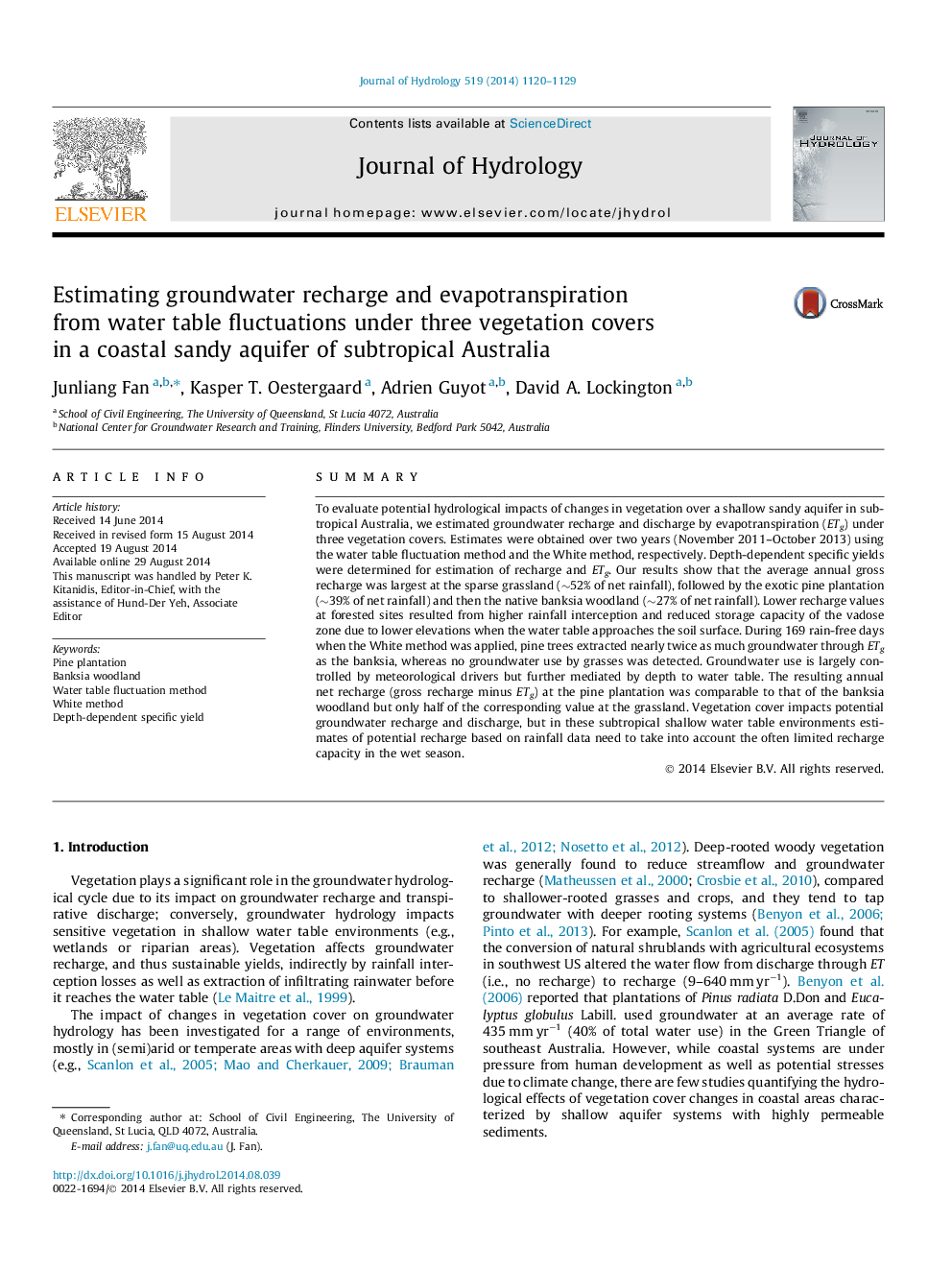| Article ID | Journal | Published Year | Pages | File Type |
|---|---|---|---|---|
| 6412577 | Journal of Hydrology | 2014 | 10 Pages |
â¢We estimated groundwater recharge and ETg under three vegetation covers.â¢Depth-dependent Sy were determined under rising and falling water table conditions.â¢Lower forest recharge was due to higher interception and reduced recharge capacity.â¢ETg was controlled by meteorological drivers but mediated by depth to water table.
SummaryTo evaluate potential hydrological impacts of changes in vegetation over a shallow sandy aquifer in subtropical Australia, we estimated groundwater recharge and discharge by evapotranspiration (ETg) under three vegetation covers. Estimates were obtained over two years (November 2011-October 2013) using the water table fluctuation method and the White method, respectively. Depth-dependent specific yields were determined for estimation of recharge and ETg. Our results show that the average annual gross recharge was largest at the sparse grassland (â¼52% of net rainfall), followed by the exotic pine plantation (â¼39% of net rainfall) and then the native banksia woodland (â¼27% of net rainfall). Lower recharge values at forested sites resulted from higher rainfall interception and reduced storage capacity of the vadose zone due to lower elevations when the water table approaches the soil surface. During 169 rain-free days when the White method was applied, pine trees extracted nearly twice as much groundwater through ETg as the banksia, whereas no groundwater use by grasses was detected. Groundwater use is largely controlled by meteorological drivers but further mediated by depth to water table. The resulting annual net recharge (gross recharge minus ETg) at the pine plantation was comparable to that of the banksia woodland but only half of the corresponding value at the grassland. Vegetation cover impacts potential groundwater recharge and discharge, but in these subtropical shallow water table environments estimates of potential recharge based on rainfall data need to take into account the often limited recharge capacity in the wet season.
